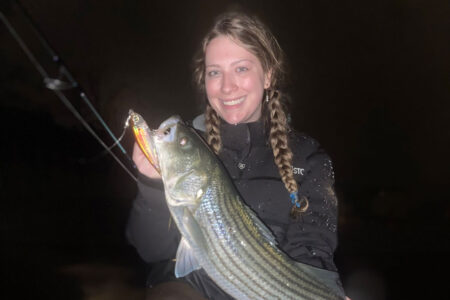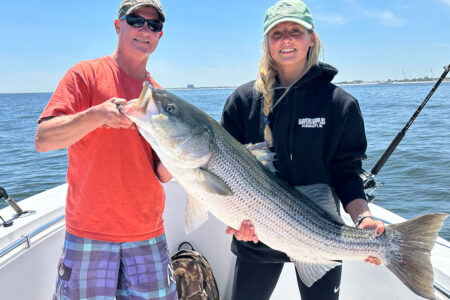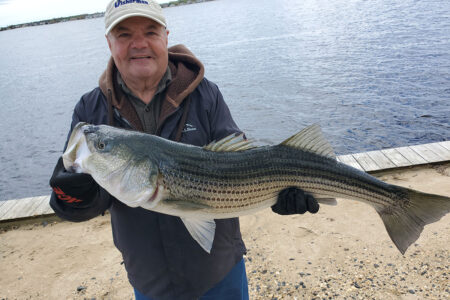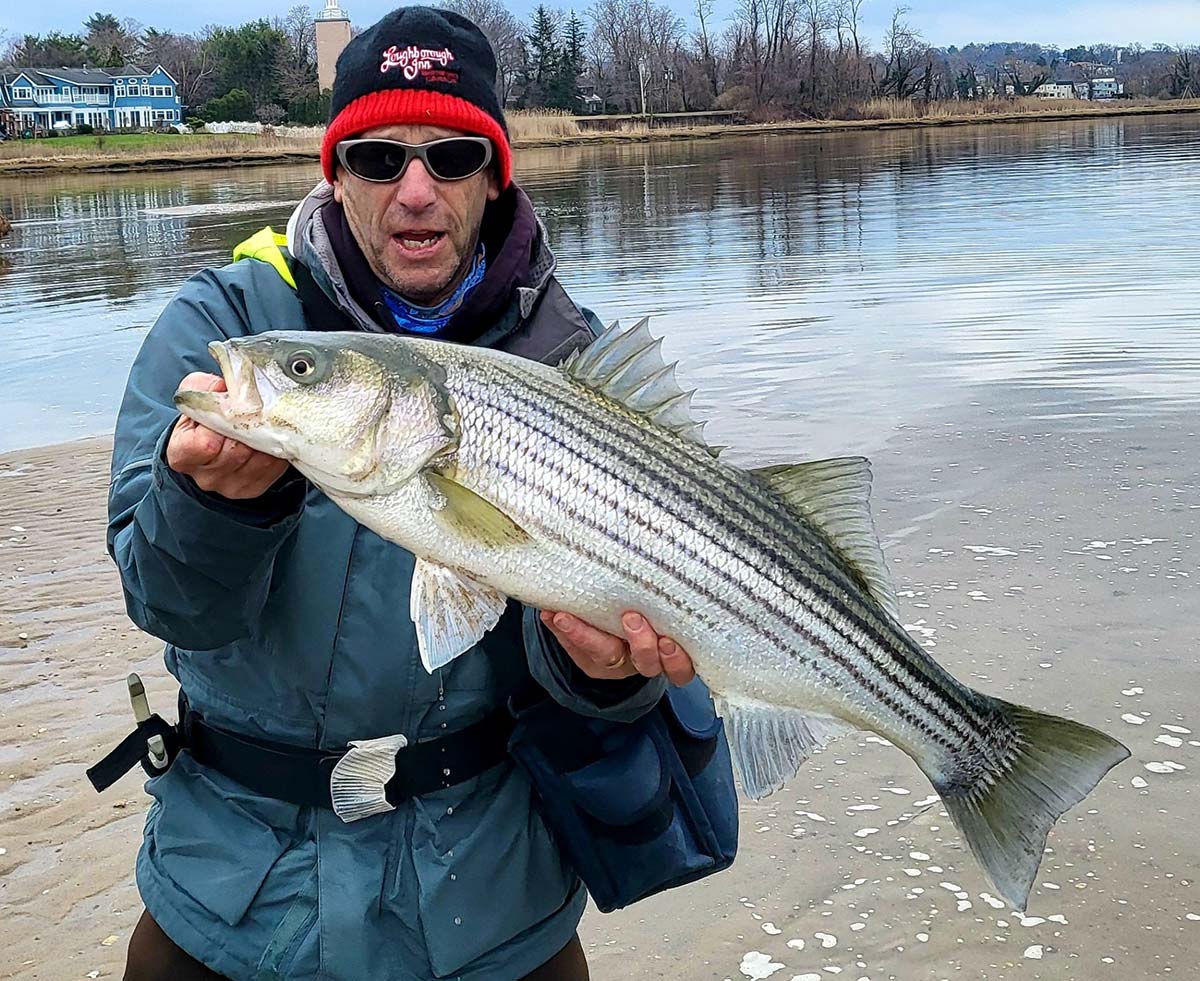
How to approach this western North Shore body of water for early surf stripers.
Although Little Neck Bay is promoted as the Mecca of early-season striped bass fishing on the North Shore, the reality is that many places in the extreme western Long Island Sound also produce early stripers. City Island, New Rochelle, Manhasset Bay, and Hempstead Harbor are among those productive early-season venues, and the reason they do is that they all share characteristics that support an early bite. These include shallow water harbors, much less water volume due to the narrower north-south width of the Sound, and easy access to the East River before moving into the Hudson to spawn in May. Less volume means the Sound water can warm faster, encouraging small baits such as spearing and sand eels to move shallow to feed on plankton. So, although I’m focusing on Little Neck Bay, most, if not all, of this information can also be applied to other areas.
Warmer Water
In spring, the shallow waters are heated by a stronger sun and rising air temperatures more easily than in eastern, deeper areas. The harbors are also shallow, with mud bottoms that absorb radiant heat from the sun and convert it into a form of heat that warms the water. The heating of the mud is especially effective on moon tides when many mud flats are exposed directly to sunlight. It doesn’t take much warming to move the food chain. Only a degree or two will stimulate the movement of bait into the harbors, and the stripers will follow them from deeper mid-Sound winter-over locations. But stripers aren’t the only predators to move shallow with small forage fish. Squid, herring, and shad also feed on the little critters, establishing a varied menu for stripers.
Food Chain
In addition to the small and larger baits mentioned above, there are holdover schools of adult bunker and sometimes even peanut bunker. However, since sand eels are generally the most abundant small bait, the quality of the run usually depends on the abundance of the wiggling sand lance. Keep in mind that scientists have reported that sand eel abundance has been declining over the last decade, so even minor fluctuations in numbers will greatly affect the abundance of herring, shad, and squid that feed on them and hence the number of larger stripers.
The number of large fish in the run simply results from an ecological food chain. So, the second animal in the chain is affected by the abundance of the first, and so on, along the chain. Since striped bass are a major large predator and positioned later in the chain, their abundance will be affected more severely than animals on preceding chain points. Although 2022 wasn’t a great year for sand eels, sand eel abundance was up a tick, so there was more herring and squid, which stimulated several “bites” of larger fish to go along with a consistent number of smaller stripers.
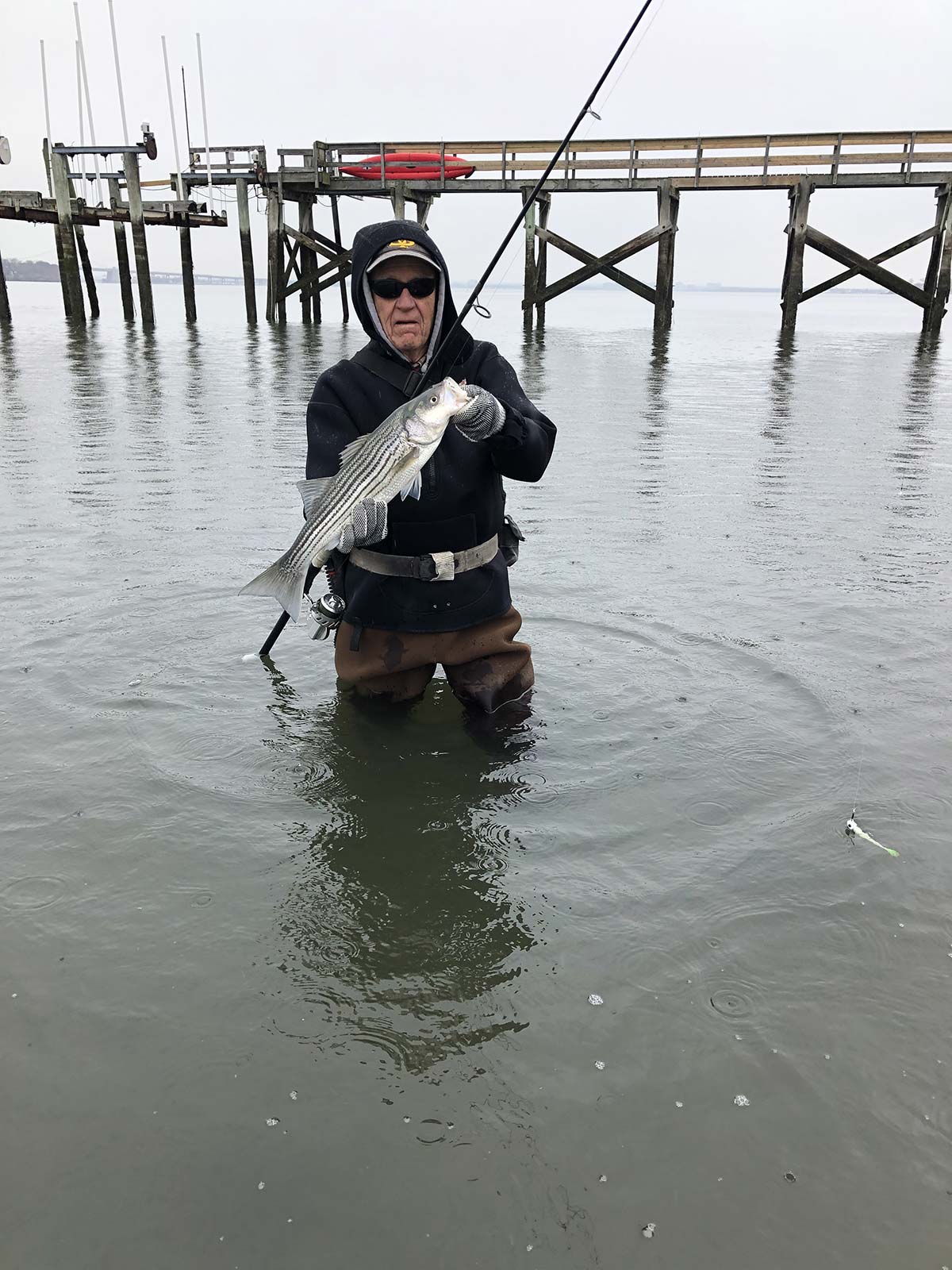
Weather Sensitive
Since it’s spring and weather conditions can vary between very mild and cold, windy and calm, and stable or frequently changing, successful fishing is more often linked to weather than at any other time of the year. Consider that if an increase of one or two degrees in water temperature can motivate a bite, then a minor decrease in water temperature can shut fishing down. That’s why I consider the weather conditions above all other factors when I decide to go fishing.
I believe wind is the most important of the weather factors, and both direction and intensity are keys to how significantly wind will affect the quality of the fishing. A wind over the angler’s back may muddy waters well off the shoreline, but clean water may persist inshore. However, several days of even offshore wind will muck things up anyway. A wind in your face is a mud wind for sure, as is a north wind that fetches for the entire length of the bay and muddies the water regardless of where you stand. Relatively calm winds lasting for several days during a warmer period is the best weather combination for successful fishing.
Several days of sun and warm temperatures can really get the bite going, but several days of cold and wind can shut the bite down for a week. Because of the importance of water temperatures, wind, and sunshine, the incoming tide tends to be more productive early in the month but is less important towards the end of the month because overall water temperatures have risen in response to warming spring weather.

Early Season Tackle
Little Neck is one of those places, and April is one of those times in the year when, if it’s calm, you have a wide choice of tackle. Unless the wind is a crosswind or blowing at you, many anglers use a 7-foot rod and a 100 or 150-size reel. Remember, different companies use different number systems. I compare other reels to my Van Staal models to gauge the size. For example, a 100-size reel by Van Staal may be a 3000 size for another. In another example, one company’s 40 model is another’s 4000, although they are the same size. So, don’t be misled by the position of the decimal point because the basic size is the same.
My 7-foot combination includes a Van Staal 150 spooled with 20-pound test Sufix Performance Braid, a 30-pound test Perlon leader tied on one end to a 50-pound test Spro Swivel, and then the swivel to the running line, and a Spro 50-pound test Prime Snap on the other end. However, when I’ll need to contend with wind or when the fish have been larger, I use my 9-foot outfit with a VS 200, spooled with the same braid and the same leader. I can cast more accurately with the 9-foot rod when there is wind and also cast heavier lures when bigger fish are feeding on adult bunker, squid, or herring.
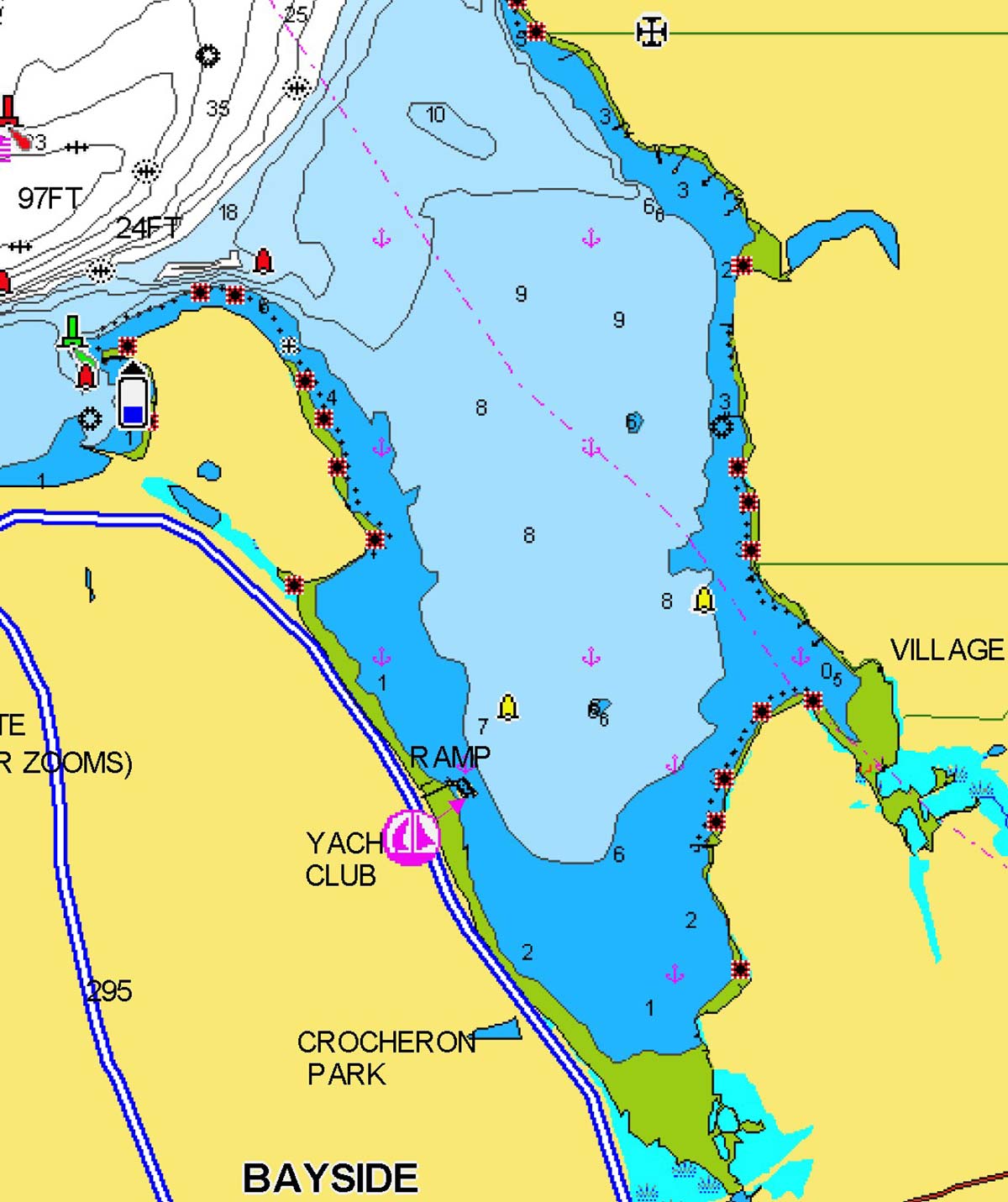
What To Select
I carry a variety of lures in April since the size of the bait and the size of the fish vary so much from day to day. The high tide water depth in most places in these western harbors is usually less than 10-15 feet, so I only carry sub-surface lures that weigh an ounce or less. I fish with bucktails and pork rinds from 1/2 to 3/4 ounces, 1-ounce spoon jigs, and soft plastic paddle tail lures on lead heads of the same weights. I use mostly paddle tails early in April, but as the month moves along, I switch to using bucktails more often. It has been my experience, and I can’t explain why, but soft plastic lures are better when the water is colder.
I always put a few 5 and 6-inch hard plastic lures in my bag because larger fish seem to prefer them in April, even in daylight. SP Minnows, Bombers, and Yo-Zuri Hydro Minnows seem to be very effective. In the spirit of being prepared, I also carry a one-ounce Cordell Pencil Popper and a similar size Super Strike Little Neck Popper. When it’s calm, and bait is visible, a popper can be a dynamite choice even though the water is cold. However, work the popper more slowly and deliberately than you might when the water is warmer.
Getting In Tune
| DRESS FOR THE OCCASION |
| Although I’ve watched anglers fishing in summer grade waders, I simply must have neoprene waders this time of year because the water is very cold, and I want to be able to stand in it for long periods of time to maximize my fishing success. I wear 3mm neoprene sometimes, but they are heavy, and if you need to walk any distance to stay with the fish, it can be tiring. So, generally, I use 2mm neoprene waders but add over-the-knee heavy woolen socks. Even wearing 2mm neoprene waders won’t keep you warm indefinitely, so when my feet get cold, I get out of the water and walk around for a while. I also wear a woolen watch cap, a neoprene top, and a heavy-duty sweatshirt. Your hands will need protection from the cold, too. If your hands hurt and go numb, you won’t be able to cast, fight a fish, unhook a fish, or certainly not be able to tie a knot. I discovered decades ago that the only glove that can keep my hands reasonably warm is Ragg wool with a Thinsulate lining. Of course, there are the occasional warm days, and on those occasions, an angler should adjust their outerwear to the conditions. |
Autumn or spring, I’ve always believed a slow retrieve is the best one to use when the water is cold. Fish are cold-blooded, so their metabolism is slower, which means their neuro-muscular responses are also slower. The same thing is true of the bait fish they chase, so fish do not need to make rapid direction changes, nor is the speed needed to chase fleeing bait. There are no absolutes in fishing, simply tendencies, patterns, and trends. So yes, I had experienced outings when a faster retrieve was more effective, although I can’t tell you why. I start with a retrieve as slow as I can manage, without hitting bottom, using either a paddle tail lure or bucktail and pork rind, and adjust my speed depending on what the fish “tell me.” Fish can tell us a lot as long as we know how to interpret their language. Of course, they don’t speak, but their behavior speaks volumes, and anglers should learn how to interpret these behaviors.
There are fish signals I use to decode the fish’s language. For example, if I get a strong hit, I conclude that I’m using the right lure at the right speed. However, if I receive numerous “bumps,” I conclude that either my lure isn’t right or my retrieve isn’t on target or both. Always change your retrieve before you change your lure, and that’s what I do first. However, sometimes a lure change is necessary. Sometimes, the fish tell us to switch to a surface lure by swirling at the surface. Or, the slap of a tail detected as a “bump” followed by slack in the line tells us to change our retrieve. Another tip is offered when you get multiple strikes on a retrieve. To me, that’s a signal that my lure and or retrieve is close but not quite right. Armed with this information, I begin varying both the lure and the retrieve. Frequently, we are only guessing about their language clues, but with experience and skill, it’s often possible to tell exactly what they’re saying.

